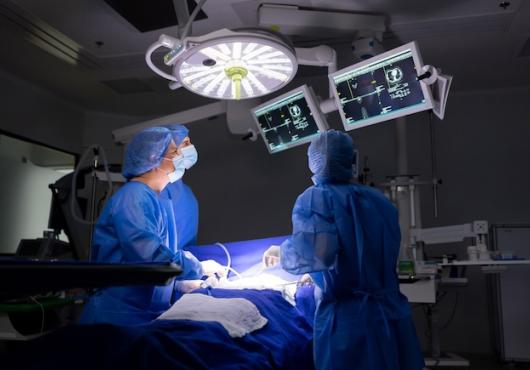
Information regarding COVID-19 has rapidly evolved. The content in this article provides a historical snapshot of events surrounding the date of posting.
As the coronavirus transmission continues to spread worldwide, we are continuing to see spikes in cases in disproportionally affected areas. One of the places currently considered a hotspot with a rapid rise of COVID-19 cases is Italy.
In a recent webinar J. Kevin Tucker, MD, chief of nephrology at Brigham and Women's Hospital and a faculty director at Harvard Medical School was joined by a leading expert,Maurizio Cecconi, MD, FFICM, MD(Res), who shared his experiences working in Milan, Italy. Professor Maurizio Cecconi is the head of the Department of Anesthesia and Intensive Care at the Humanitas Research Hospital, as well as the President-Elect for the European Society of Intensive Care Medicine. The following article is an excerpt from this discussion recorded on April 9, 2020 that has been condensed and edited for clarity and accuracy.
Will you tell us about the initial Italian experience with COVID-19?
Prior to the start of our uncontrolled cluster in Italy on February 20, 2020, we, like other countries, had been monitoring the Chinese experience. Up until then, we had no surprises. We were monitoring and quarantining every confirmed case. Contacts were also being traced and quarantined.
On February 20th, a patient in his 30s was admitted to a local hospital, where he was previously treated for an atypical pneumonia. This patient was not responding to initial treatment. He was not considered to be at risk, nor was he in contact with someone that had coronavirus. Only after further investigation was a PCR swab collected. A few hours later, the patient was considered positive.
This was the beginning of our nightmare. We had our first case, patient number one. We never could trace him back to patient zero. The following day, we had more than 36 cases where we were unable to link to an index case. Although our network was able to assist each other in cases of acute respiratory or cardiac failure, the number of critical care admissions into our regional ICU network quickly became overwhelming. The government immediately called upon this network to set up an emergency response to cope with the surge. It’s probably one of the things that saved us from collapsing immediately.
During the first few days in Milan, I remember sitting down with Antonio Pesenti and Giacomo Grasselli, who are coordinating our response in the ICU, and saying, “we've never seen anything like this in our life.” The surge was worse than what we were expecting from the Chinese data. It was so strong and overwhelming that we needed to share our experience with others so they could prepare.
How far in advance from the index presentation had you been planning to see patients with COVID-19? Were you expecting to see patients, based upon the Chinese experience and the high likelihood of the disease, coming into Italy?
We started to plan before our initial index case. When we saw what was happening in Wuhan, everyone was quite nervous. Until February 20th, the risk criteria included travel from China or contact with someone being monitored for COVID-19. At this stage, we only had a few cases in Europe.
It was February 20th when we realized we had an uncontrolled cluster. We needed to put an emergency plan in place. Public health measures were the only way to prevent overwhelming the system. We do believe that the government lockdown approach was the only responsible way to deal with this, even if it's very painful for society and for the economy.
Can you tell us more about your experience with COVID-19 and the mortality of older populations?
In Italy, we have one of the oldest populations in the world, with a median age of 63 years. An infection in this population creates a significant burden of care, as these patients are more likely to experience severe symptoms and ICU admission. With invasive mechanical ventilation, we’ve found that mortality is significantly high.
As of April 8, we had 131,000 cases and 16,000 deaths. Our case fatality rate is quite high at about 12%. However, if you look at the case fatality rates by different age groups, we can see a clear increase in case fatality rates in people aged 60 and above.
At this stage, we are still learning from this new disease. However, we have experience from past intensive care cases. We know that patients admitted with pneumonia that require mechanical ventilation are less likely to survive if they are older with comorbidities. In a way, it's not surprising that patients with comorbidities are dying more than younger patients. What is dramatic is the number of patients that we are seeing come into our intensive care all at one time.
In your experience, what is the rate of hospital-acquired transmission of COVID-19 of health care workers, as opposed to community-acquired exposures?
That is a difficult question. Our current data shows about 10% of positive cases are health care workers. We don't yet know if these health care workers were infected on the frontline or within the community. At the beginning, it was difficult as hospitals did not realize COVID-19 patients were presenting. We had several health care workers become infected, some of who became quite sick.
We are utilizing strong precautions at our hospitals. By using training methods, masks, and protective equipment, my team has a very low rate of positive cases, and we do not have any serious infected cases.
In the first 48 hours of the initial cluster, we ran simulations to train everyone working in the unit on donning and doffing procedures and now have a rotation of health care workers that help in very precise doffing procedures. As you may know, the most dangerous part is not the donning, but the doffing, so it’s important to take precautions.
In my experience, it is important to be very strict about separating floors of suspected cases and positive cases. At least in my department, we’ve found this to be effective in limiting risk for health care workers, especially when we have a very sick group of patients with potentially highly invasive and highly aerosolized procedures. We also try to complete as many anticipated procedures as possible simultaneously on critically ill patients. For example, if the patient is going to need an arterial line, central line, and dialysis catheter, one team of experts will do these procedures at the same time.
In your hospital and in your region, have you needed to resort to crisis standards of care in terms of allocation of resources? Or, do you have enough resources, both human resources and equipment like ventilators and dialysis machines, to treat all the patients who require it?
It has been our mission to provide intensive care to whoever needed it. To do this, we have been very creative with our resources. In the beginning, we may have compromised on the quality of technology but not on providing ICU beds. We've always tried to ensure beds were available for patients who needed them.
If you came to my hospital six weeks ago, you would have found workers building a new ICU. We now have roughly about 90-plus ICU beds, in comparison to our original 24. Currently, I have 40 COVID-19 patients with invasive mechanical ventilation. We have about 40 level 2 beds in other parts of the hospitals to provide CPAP, noninvasive ventilation, and more extensive monitors. We have another smaller ICU with 12 level 3 beds for non-COVID patients.
We’ve had to shift our staffing levels around. Nurses from different parts of the hospital are now working in intensive care. Anesthetists and other doctors are freeing capacity to treat COVID-19 patients. I’ve used anesthetic machines instead of ICU ventilators.
I cannot emphasize enough how important training is when your system is not overwhelmed. It’s the right thing to do for our health care workers and for the containment of the virus. It’s also important to work with your hospital management to ensure proper procurement is in place to stock and restock all the protective equipment. We cannot afford hospitals to become clusters.
What strategies and procedures are you following for performing procedure on critically ill patients?
I am quite lucky in my hospital. I have to say, in many of the intensive care units in this country, we have departments of anesthesia and intensive care. Most of the time, the intensivists are anesthetists that specialize and work in intensive care. Even when I had to take more doctors into the rotation for these areas, they come from anesthesia, where everyone is very familiar with procedures like central lines, intubations, and so on. So, I'm lucky that everyone I work with is very capable in doing these procedures.
I know that in some parts of the world, they've had to create specific equipment for intubation or central lines. In my department, we haven’t had to do that. We are however using telemedicine. Every day, we tend to do tele-ward rounds in any way we can. For the technical procedures, we use who is on shift, which has worked pretty well.
We also have an outside team using a similar video connection system, as we didn't have the time to set up telemedicine. Being able to see each other virtually, discuss cases and plan for the next 24 hours has been helpful.
Do you have any final thoughts you'd like to leave us with?
One aspect that we didn't touch upon are the affected families. We cannot allow relatives to currently visit the hospital. This has created an unprecedented situation. For the last 20 years, we have tried to keep relatives as involved as possible at the bedside.
Now, all of our communication has changed. We only go to the bedside with protections. Our patients no longer see our face. They see our masks. People say that we are learning to smile with our eyes now. It is stressful for everyone. You have to learn a new way of communicating, which is completely different from anything we've done for the last 10 years in intensive care.
I would not underestimate this communication. We are all fine tuning how to care for relatives that cannot come to the bedside in these situations. We find it difficult not to allow families at the bedside during the end of life. It's very sad. I do suggest finding the best ways to communicate with both patient relatives as well as your team. We're trying to be there for our patients as it's an important part of the care that we do.
-
Featured Panelists
- J. Kevin Tucker, MD, Assistant Professor of Medicine, Harvard Medical School, Chief of Nephrology Brigham and Women’s/Faulkner Hospital, Faculty Director, Accreditation and Maintenance of Certification, Harvard Medical School Postgraduate Medical Education (PGME)
- Maurizio Cecconi, MD, FRCA, FFICM, MD(Res), Head of Department Anaesthesia and Intensive Care Units, Humanitas Research Hospital, Milan Italy; Professor of Anaesthesia and Intensive Care, Humanitas University, Milan, Italy; President Elect ESICM
- Anjali Acharya, MD, Director of Nephrology, Jacobi Medical Center, Bronx, NY; Professor of Medicine, Albert Einstein College of Medicine, Bronx, NY
- Matthew D. Langston, MD, Assistant Professor, Albert Einstein College of Medicine, Bronx, NY; Department of Medicine (General Internal Medicine), Jacobi Medical Center, Bronx, NY


